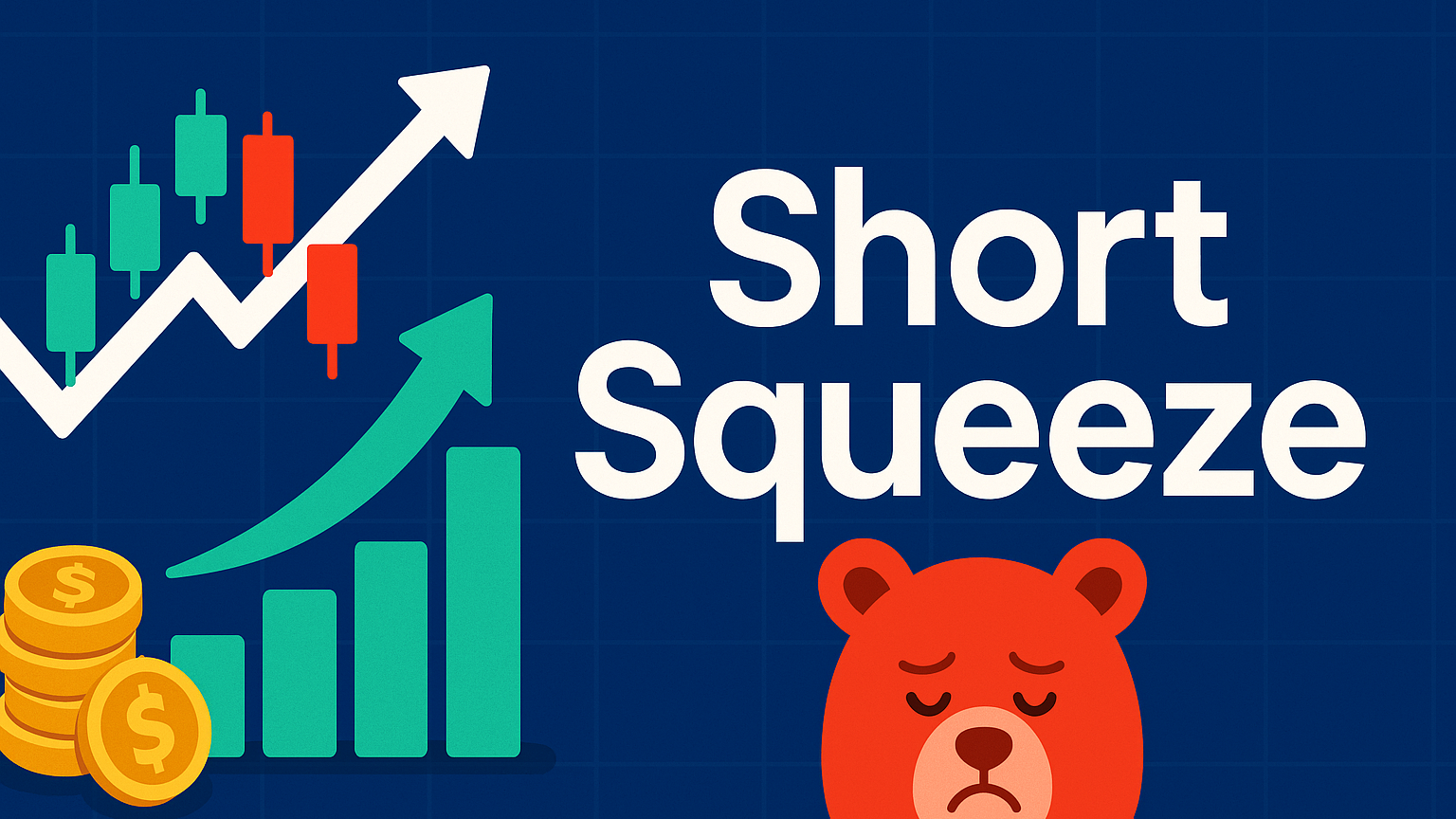Learn about W Bottoms and W Tops patterns for market reversals, key components, confirmation methods, and effective trading strategies.
W Bottoms and W Tops are chart patterns that signal potential market reversals. These formations resemble the letter "W" (for bottoms) or "M" (for tops) and help traders identify shifts in market sentiment. Here's what you need to know:
Key Takeaways:
- W Bottoms: Form during downtrends with two similar lows, signaling bullish reversals.
- W Tops: Form during uptrends with two similar highs, signaling bearish reversals.
- Confirmation: Breakouts (above the neckline for bottoms, below for tops) with increased volume validate the pattern.
- Indicators: Use tools like RSI, MACD, and volume analysis for stronger confirmation.
- Risk Management: Place stop-loss orders below the second low (for W Bottoms) or above the second high (for W Tops).
Quick Comparison Table:
| Pattern | Formation | Breakout Signal | Volume Behavior |
|---|---|---|---|
| W Bottom | Two similar lows, middle peak | Breaks above neckline | High volume at lows & breakout |
| W Top | Two similar highs, middle trough | Breaks below neckline | High volume at highs & breakdown |
Video Example of a W Bottom Pattern When Using Technical Analysis
W Pattern Structure
W patterns highlight market reversals, offering traders a framework to identify and confirm trading opportunities.
W Bottom Components
A W Bottom forms during a downtrend, creating a shape resembling the letter "W." Here’s how it breaks down:
- First Bottom: Marks the initial support level during a downtrend.
- Middle Peak: The high point between the two troughs, acting as resistance.
- Second Bottom: Appears within 3–4% of the first bottom, reinforcing the pattern.
- Neckline: The resistance level defined by the middle peak, which must be surpassed to confirm the pattern.
The longer it takes for the W Bottom to form, the stronger its reversal signal becomes.
W Top Components
A W Top, which looks more like an "M", forms at market highs and signals a bearish reversal. Its key elements include:
| Component | Description | Role in Pattern |
|---|---|---|
| First Peak | The initial high in an uptrend | Establishes resistance |
| Middle Trough | Lowest point between the peaks | Acts as a support reference |
| Second Peak | Matches the height of the first peak | Confirms the pattern |
| Neckline | Support level at the base of the pattern | A critical breakdown point |
These components, combined with key price levels, help traders pinpoint entry and exit zones.
Key Price Points
Specific price levels play a crucial role in validating these patterns and guiding trading decisions:
-
Support Levels:
- For a W Bottom, the troughs define support.
- For a W Top, the middle trough and neckline serve as support.
-
Resistance Levels:
- In a W Bottom, the middle peak acts as the initial resistance.
- In a W Top, the two peaks create strong resistance.
-
Breakout Zones:
- A W Bottom breakout happens when the price rises above the middle peak or neckline.
- A W Top breakdown occurs when the price drops below the middle trough.
- Profit targets can be set at the height of the pattern, with aggressive targets extending up to twice that height.
The pattern's reliability improves with extended formation periods and volume confirmation at these critical price levels, making it a valuable tool for traders when price action aligns with these structures.
Pattern Recognition Steps
Spotting W Bottom and W Top patterns involves analyzing specific chart features. Here's a guide to help you identify these patterns and avoid common missteps.
Finding W Bottoms
To spot a W Bottom, focus on price movements during a downtrend and look for these elements:
- Initial Bottom Formation: The first dip occurs near a key support level. Look for reversal candlestick patterns like hammers or morning stars, which suggest a shift in momentum.
- Middle Peak Validation: A short-lived rally follows, creating a peak. This peak often hits resistance as sellers regain control.
- Second Bottom Confirmation: A second dip forms close to the first bottom, reinforcing the support zone.
The same principles apply in uptrends for identifying W Tops.
Finding W Tops
W Top patterns are the reverse of W Bottoms and occur during an uptrend. Here's what to watch for:
| Component | Key Characteristics | Confirmation Signals |
|---|---|---|
| First Peak | Forms during a strong uptrend | Overbought conditions |
| Middle Trough | Retraces 40–60% from the first peak | Lower volume compared to peaks |
| Second Peak | Similar height to the first peak | Weakening momentum |
| Neckline Break | Price drops below support | Increase in volume |
Common Errors in Pattern Recognition
Before taking action, ensure the pattern is fully developed. Avoid these frequent mistakes:
- Premature Pattern Declaration: Don’t act until the second bottom or top forms and the neckline is clearly broken.
- Ignoring Volume Analysis: Volume plays a critical role. A neckline break should coincide with a noticeable volume increase.
- Timeframe Confusion: Analyze the pattern across multiple timeframes. Longer timeframes often provide stronger signals.
- Skipping Technical Confirmation: Use indicators like RSI or MACD to verify the pattern. Divergences can offer additional confirmation.
- Overlooking Market Context: Always consider the broader market trend, key support/resistance levels, and overall conditions for a complete picture.
Signal Verification Methods
Confirming trading signals is crucial for making decisive moves, especially when working with patterns like the W Bottom. This process involves analyzing volume, technical indicators, and price break behavior.
Volume Confirmation
Volume plays a key role in separating valid reversals from misleading signals. For W Bottom patterns, pay attention to how volume behaves at critical points:
| Pattern Point | Volume Behavior | Signal Strength |
|---|---|---|
| First Bottom | High volume during selling climax | Strong signal |
| Middle Peak | Moderate volume | Normal signal |
| Second Bottom | Lower volume than the first | Indicates bullish trend |
| Breakout | Significant volume increase | Strong signal |
An example is Boston Scientific Corp (BSX) between 2010 and 2013. The stock showed a W Bottom pattern with declining weekly volume during 2011–2012. In January 2013, the price broke above the upper trendline and the 50-week EMA, starting a new uptrend.
After analyzing volume, incorporate technical indicators for a more comprehensive assessment.
Supporting Indicators
Technical indicators add valuable layers of confirmation:
-
MACD Analysis
- Look for a MACD crossover as a momentum signal.
- Use this in combination with other tools rather than relying on it alone.
-
RSI Application
- Watch for RSI dropping below 30 at pattern bottoms.
- Check for bullish divergence at the second bottom.
- Combine RSI signals with MACD for stronger validation.
Once indicators align, confirm the move with a price break analysis.
Price Break Confirmation
To confirm price breaks, follow these steps:
- Volume Analysis: Ensure increased volume supports breakout attempts.
- Retest Analysis: Check for new support or resistance levels after the breakout.
- Technical Validation: Use Bollinger Bands to verify price moves, as they capture about 90% of price action.
For instance, Expeditors International (EXPD) demonstrated this method effectively. While its price dipped slightly below a prior low, the On Balance Volume (OBV) stayed above the previous low, signaling a bullish divergence that led to a strong recovery.
W Pattern Trading Methods
These methods turn pattern signals into actionable trading strategies by building on earlier identification and confirmation techniques.
W Bottom Trade Setup
For bullish W Bottom trades, look for a breakout above the neckline formed by two similar lows separated by a peak. For example, on a USD/CAD hourly chart, two lows near $1.30 created a clear neckline. When the price broke above $1.3110, it resulted in a 70-pip profit.
| Trade Component | Strategy Detail | Risk Consideration |
|---|---|---|
| Entry Trigger | Price closes above the neckline with volume confirmation | Ensure breakout is confirmed by a candle close |
| Initial Target | Measure the distance from the low to the neckline and project upward | Maintain a favorable risk-reward ratio |
| Entry Timing | Enter after the second bottom confirms the pattern | Avoid entering too early |
W Top Trade Setup
For bearish W Top trades, wait for the price to break below the neckline formed by two similar highs separated by a trough. Confirm the breakdown with stronger selling pressure before entering a short position. Combine these setups with strict risk management to protect your trades.
Risk Control Rules
Strong risk management is key once trade setups are identified. A pattern is just a signal until confirmed by a breakout.
- Use stop-loss orders: For W Bottom trades, place the stop-loss below the second bottom; for W Top trades, set it above the second peak.
- Adjust position size to control potential losses.
- Account for volatility: Place stop-loss orders slightly beyond the neckline, adding a small buffer for market fluctuations.
Advanced W Pattern Analysis
Timeframe Analysis
The timeframe you choose can greatly impact how reliable W patterns are. Generally, daily and weekly charts offer more dependable signals for medium- to long-term trades. For instance, in the gold market, a W pattern on daily charts has shown multiple entry opportunities at varying scales.
| Timeframe | Pattern Characteristics | Trading Implications |
|---|---|---|
| Weekly/Monthly | Slower to form but highly reliable signals | Best for position trading with fewer false signals |
| Daily | Balanced in both reliability and frequency | Works well for swing trading strategies |
| Intraday | Quick formations but higher risk of errors | Fits day trading but demands rapid decision-making |
Pattern Combinations
Enhance the accuracy of W patterns by using other technical tools. Here’s how you can integrate them:
-
RSI (Relative Strength Index):
- Identify bullish divergence at the second low.
- Use RSI to detect momentum shifts early in the pattern.
- Look for oversold conditions at the pattern's bottom.
-
Fibonacci Retracement:
- Apply Fibonacci levels to pinpoint key support and resistance zones after breakouts.
- This helps refine entry and exit points while managing risk.
-
MACD (Moving Average Convergence Divergence):
- Watch for bullish crossovers in MACD during the second low.
- These crossovers can confirm potential reversals.
By combining these tools with W patterns, you can improve your trading strategies across various markets.
Market Applications
Understanding how market-specific factors affect W patterns can give you an edge. For example:
- In late 2018 and early 2019, Bitcoin formed a double bottom on the weekly chart. The extended second bottom created ample opportunities for accumulation.
- During the March 2020 COVID crash, Bitcoin followed a V-shaped recovery instead of a W bottom. This deviation emphasized the importance of adjusting your analysis to fit current market conditions.
To apply W patterns effectively:
- Confirm breakouts with higher trading volume.
- Wait for price to retest breakout levels before entering trades.
- Combine pattern signals with an understanding of the overall market environment.
- Factor in the volatility unique to each market.
Longer timeframes, like weekly or monthly charts, consistently deliver more reliable signals across different market types. These are particularly useful for strategic, long-term trading decisions.
Conclusion
Main Points Review
W patterns require precise identification, proper confirmation, and careful risk management.
To recognize these patterns effectively, traders should focus on:
- Clear price action: Look for two distinct bottoms at similar levels.
- A well-defined neckline: Connect the highs between the two bottoms.
- Volume confirmation: Pay attention to volume at the lows and during the breakout.
- Additional indicators: Use tools like RSI and MACD for added confirmation.
"The key to utilizing the W pattern lies in identifying a confirmed breakout and making market decisions accordingly." - Ritika Tiwari, Content Writer and Strategist at Blueberry
| Trading Component | Verification | Risk Control |
|---|---|---|
| Pattern Formation | Spot a clear downtrend with two distinct lows | Place a stop-loss below the second trough |
| Breakout Signal | Wait for a price close above the neckline | Use proper position sizing |
| Volume Analysis | Look for increased volume during the breakout | Follow overall risk management guidelines |
| Indicator Support | Use indicators like RSI and MACD for confirmation | Take partial profits at set targets |
These principles set the foundation for executing W pattern trades.
Implementation Guide
Here’s how to approach a W pattern trade step by step:
-
Pattern Identification
Analyze daily and weekly charts for potential W patterns. Focus on clear price movements and well-defined support areas. -
Signal Confirmation
Before acting, confirm the following:- A decisive break above the neckline.
- A noticeable surge in volume.
- Alignment with indicators like RSI and MACD.
- Favorable market conditions.
-
Risk Control
Stick to strict risk management strategies:- Place stop-loss orders just below the second trough.
- Adjust position sizes based on your risk tolerance.
- Stay aware of key economic events.
- Set profit-taking levels in advance.
Patience and discipline are essential. Avoid jumping into trades before the pattern is fully confirmed or ignoring volume signals. Combining solid technical analysis with sound risk management allows traders to make the most of W pattern opportunities across different markets.






